After the 2012 reforms most of the attention went to IMR and the huge volume of UR disputes that wound up on the doorstep of Maximus, the DWC’s IMR provider.
IBR, on the other hand, has gotten almost no attention.
One would have thought that there was little friction between payors and medical providers over bills.
The DWC has now produced a 2018 report that analyzes IMR from 2013 to 2017.
You can see the report here:
https://www.dir.ca.gov/dwc/IBR/Reports/IBR-Report-2013-2018.pdf (Sadly This Report No Longer Exists)
IBR applications peaked in late 2016 but fell substantially in 2017. By the 4th quarter of 2017 there were only 466 IBR applications filed.
When an IBR application was filed, the medical provider won 55% of those disputes (i.e. it was determined that additional reimbursement to the provider was warranted).
The report concludes that :
“Now in its sixth year, IBR continues to provide an effective process for resolving billing disputes for payment of medical and medical-legal services in the workers’compensation system.”
What is unknown is how many disputes exist between medical providers and claims administrators where the provider does not bother to seek IBR review. Perhaps some providers either don’t know about IBR or don’t want to be bothered.
Yet, unlike IMR, one would have to give IBR a positive report card.
Stay tuned.
Julius Young
www.boxerlaw.com



